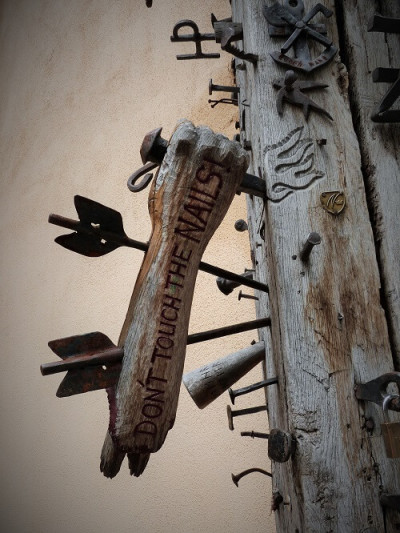On my visit to Transylvania earlier this year, there was one city in particular I was looking forward to exploring: Sibiu.
Luckily for me, ABC Romania kindly arranged a guided tour of the city to help me get to know its secrets. This is what I saw on my walking tour of Sibiu.
Starting on the Piaţa Albert Huet, my guide Florin gave me a brief insight into the history of the city – one of the main reasons I was so intrigued to visit Sibiu.
Despite now sitting in the geographic centre of Romania, the city was actually founded by Saxons from present-day Germany, who named the fortress town Hermannstadt. The city was the most important of the seven fortresses founded by the Saxons and later became the capital of Transylvania.
Fun fact: the German word for Transylvania Siebenbürgen means ‘seven fortresses’.
Today, despite having lost almost all of its Ethnic German population, the city still has Saxon ties, including the impressive Sfanta Maria Evangelical Cathedral and the German-speaking Brukenthal College found on the square, reportedly one of the best in the city.
Next up, we walked to the Stairs’ Tower – one of the most picturesque places in the city. From here, you can enjoy a view over the rooftops of the lower town, featuring the trademark ‘peeping eyes’. Adjacent to it is the Journeyman’s House. According to ancient tradition, selected individuals from towns around Europe would travel the continent developing their crafts and skills. The Journeyman’s House was intended to home these travelling craftsman. Those who visited leave their mark by way of a nail in a wooden plinth outside.
Heading towards Piaţa Mică, the former fortress market place, we passed over Liars’ Bridge, also known as the Iron Bridge. The unofficial symbol of Sibiu’s old town, the bridge is supposed to have gained its name from young lovers declaring their ‘undying’ love here (though actually it’s derived from the word ‘to lie’ – as in to lie flat). Regardless, today the bridge is a popular spot for tourists to have their photos taken as it offers great views of both the upper and the lower town.
Fun fact: for the best views over Sibiu, head to the Stairs’ Tower, Liars’ Bridge or the top of the Council Tower.
Passing under the Council Tower, we headed to Piaţa Mare, the biggest square in the old town. Though normally a busy and bustling place, most of the square was cordoned off for the International Theatre Festival, known as FITS. On this square, you can find Sibiu’s only Art Noveau building – a testament to the architectural variety found in the city.
Next, we headed to the old city walls, which were the original limits of the medieval city. Unfortunately not all the walls remain, but a well-preserved stretch can be found along Strada Cetăţii.
Fun fact: Sibiu’s own Walk of Fame is slowly gaining pace here as every year the best actors of the Theatre Festival gain a plaque.
From here, we winded back towards the heart of the old town, towards the Orthodox Cathedral. With its huge dark domes, this beautiful brick building wouldn’t look out of place in Istanbul and it jars pleasantly with the Germanic architecture found in the old town. Inside, the Cathedral is just as impressive – ornately decorated with brightly-coloured motifs. Sibiu is home to several churches of different faiths, which is a testament to its multicultural history.
The Cathedral is found on Strada Mitropolilei, which has to be my favourite street in Sibiu. Stretching from the Evangelical Cathedral to the Orthodox Cathedral, the curved street has a picture-perfect row of pastel-coloured facades, with spires visible at both ends. The street is also home to a LOT of parked cars (if there is one Sibiu desperately needs, it’s underground parking) but it doesn’t ruin the view.
From Strada Mitropolilei, you can head down the pretty Passage of Stairs, a romantic walking route which leads to the lower town. From here, you can get some great views up to the Saint Maria Cathedral.
Fun fact: Sibiu was only hit by one shell in WWI and none in WWII, leaving the city entirely unscathed.
While the Lower Town definitely doesn’t have the same level of attractions as the Upper Town, it was still one of my favourite parts of the Sibiu. The architecture here is completely unique. Houses are painted in brash bright colours and sagging brown roofs have windows that look like dropping eyelids. You can really get a sense here of the previous ‘peasant culture’ that existed in Transylvania in previous years – something that is very different to the wealth of the Germanic Upper Town.
Other points of interest
Strada Nicolae Bălcescu – the main shopping street in the old town, this leafy avenue is pedestrianised and dotted with pretty buildings.
Music Pub – hidden away off a corner of Piaţa Mică, this atmospheric little pub is a great place to spend a few hours listening to live music and inhaling lungfuls of smoke.
Unnamed abandoned house – one last gem I discovered while walking the city was a beautiful abandoned house on a large plot close to the train station. I absolutely loved the look and style of it – even more so for being seemingly forgotten…
In conclusion, Sibiu definitely did not disappoint. The city has more than its fair share of beautiful buildings, attractions and landmarks and it’s a crying shame that the area doesn’t see more tourists. The cityscape is a testament to the town’s turbulent past and real efforts are going into the preservation and restoration of the city’s history.
In short, if Sibiu wasn’t on your list before, make sure to add it now.

